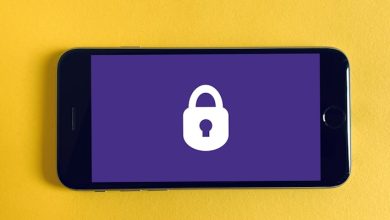How to Use Decentralized Identity Verification

- Understanding Decentralized Identity Verification
- Benefits of Implementing Decentralized Identity Verification
- Steps to Set Up Decentralized Identity Verification
- Challenges to Overcome When Using Decentralized Identity Verification
- Best Practices for Secure Decentralized Identity Verification
- Future Trends in Decentralized Identity Verification
Understanding Decentralized Identity Verification
Decentralized identity verification is a method of confirming a person’s identity without relying on a central authority. This approach offers increased privacy and security for individuals seeking to verify their identity online. Instead of entrusting sensitive personal information to a single entity, decentralized identity verification allows individuals to control their own data.
By utilizing blockchain technology, decentralized identity verification creates a secure and tamper-proof record of an individual’s identity. This record can be accessed and verified by authorized parties without the need for a central database. This not only reduces the risk of data breaches but also provides individuals with greater control over who has access to their personal information.
One of the key benefits of decentralized identity verification is the ability to enable secure and seamless digital interactions. By establishing a trusted digital identity that is portable across different platforms and services, individuals can easily prove their identity without repeatedly sharing sensitive information. This can streamline processes such as online account creation, document signing, and financial transactions.
Overall, decentralized identity verification offers a promising solution to the challenges of online identity verification. By empowering individuals to take control of their own identity data, this approach enhances security, privacy, and convenience in the digital world. As the technology continues to evolve, decentralized identity verification has the potential to revolutionize how we prove who we are online.
Benefits of Implementing Decentralized Identity Verification
Implementing decentralized identity verification offers numerous benefits for individuals and organizations alike. One of the key advantages is enhanced security. By using blockchain technology, decentralized identity verification reduces the risk of data breaches and identity theft. It provides a secure and tamper-proof way to verify identities, ensuring that sensitive information remains protected.
Another benefit of decentralized identity verification is increased privacy. Unlike traditional identity verification methods, which often require individuals to share sensitive information with multiple parties, decentralized identity verification allows users to control who has access to their personal data. This not only protects privacy but also gives individuals greater autonomy over their own information.
In addition to security and privacy, decentralized identity verification offers greater convenience. With traditional methods, individuals often have to go through time-consuming and cumbersome processes to verify their identity. Decentralized identity verification streamlines this process, making it faster and more efficient. This can save both individuals and organizations time and resources.
Steps to Set Up Decentralized Identity Verification
To set up decentralized identity verification, follow these steps:
- Choose a decentralized identity platform that aligns with your needs and preferences.
- Create a digital identity by providing relevant personal information and verifying it through the platform.
- Generate a unique decentralized identifier (DID) that will be linked to your digital identity.
- Secure your digital identity and DID using encryption and multi-factor authentication methods.
- Use your decentralized identity for verification purposes whenever needed, ensuring privacy and security.
These steps will guide you through the process of setting up decentralized identity verification in a secure and efficient manner. By following these steps, you can take advantage of the benefits of decentralized identity verification in various online transactions and interactions.
Challenges to Overcome When Using Decentralized Identity Verification
When utilizing decentralized identity verification, there are several challenges that users may encounter. One of the main obstacles is the lack of standardization across different platforms and systems. This can lead to difficulties in interoperability and data sharing between various entities. Additionally, there is often a concern about the security and privacy of personal information when using decentralized identity verification systems.
Another challenge is the issue of scalability, as decentralized systems may struggle to handle a large volume of requests and transactions. This can result in delays and inefficiencies in the verification process, which can be frustrating for users. Moreover, there may be a lack of trust in decentralized identity verification systems, as some individuals may be skeptical about the reliability and accuracy of the information being shared.
Furthermore, regulatory compliance can pose a significant challenge when using decentralized identity verification. Different regions may have varying laws and regulations regarding data protection and privacy, which can make it difficult to ensure compliance across all jurisdictions. This can create barriers to adoption and implementation of decentralized identity verification systems.
Best Practices for Secure Decentralized Identity Verification
When utilizing decentralized identity verification, it is essential to follow best practices to ensure security and trust in the verification process.
One crucial best practice is to always verify the authenticity of the decentralized identity provider. This can be done by checking their reputation, reviews, and certifications.
Another important step is to use strong encryption methods to protect the identity data being shared. This helps prevent unauthorized access and data breaches.
It is also recommended to implement multi-factor authentication for added security. This extra layer of verification helps ensure that only authorized individuals can access the identity information.
Regularly updating and patching the decentralized identity verification system is essential to address any vulnerabilities and protect against security threats.
Lastly, educating users on best practices for secure decentralized identity verification is crucial. This helps prevent human errors that could compromise the security of the verification process.
Future Trends in Decentralized Identity Verification
The future of decentralized identity verification is promising, with advancements in technology paving the way for more secure and efficient identity verification processes. One trend that is expected to gain traction is the use of blockchain technology for storing and managing identity data. By leveraging the decentralized nature of blockchain, individuals can have more control over their personal information and who has access to it.
Another emerging trend is the use of biometric authentication methods for identity verification. Biometrics, such as fingerprint scans or facial recognition, offer a higher level of security compared to traditional methods like passwords or PINs. This trend is likely to continue as biometric technology becomes more widespread and affordable.
Furthermore, the rise of self-sovereign identity solutions is also shaping the future of decentralized identity verification. Self-sovereign identity puts the individual in control of their own identity, allowing them to manage and share their personal information as they see fit. This approach is gaining popularity as people become more concerned about data privacy and security.
Overall, the future of decentralized identity verification looks promising, with technology advancements and shifting attitudes towards data privacy driving innovation in this space. As more organizations and individuals adopt decentralized identity solutions, we can expect to see a more secure and user-centric approach to identity verification in the years to come.



